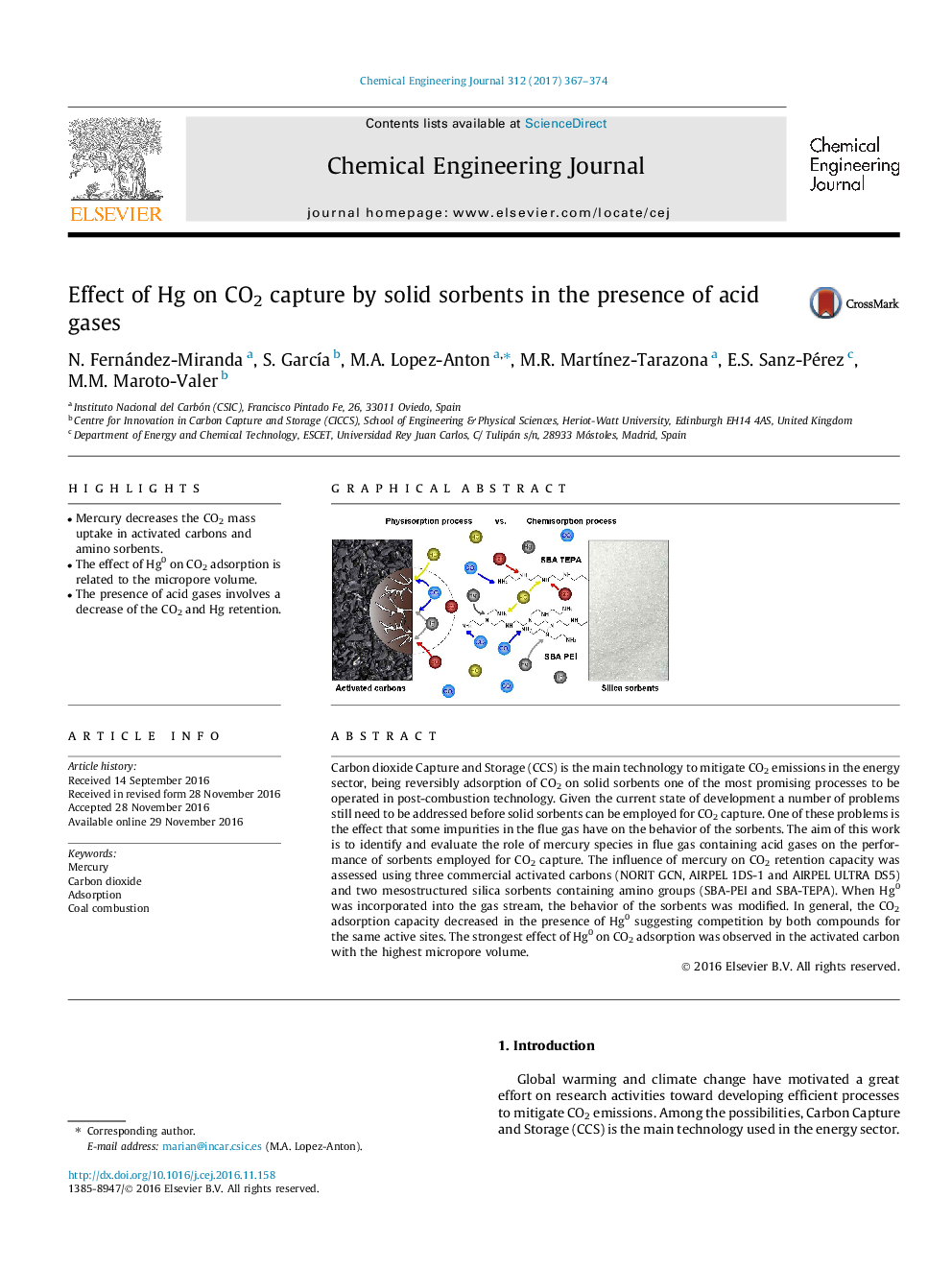| Article ID | Journal | Published Year | Pages | File Type |
|---|---|---|---|---|
| 6466481 | Chemical Engineering Journal | 2017 | 8 Pages |
â¢Mercury decreases the CO2 mass uptake in activated carbons and amino sorbents.â¢The effect of Hg0 on CO2 adsorption is related to the micropore volume.â¢The presence of acid gases involves a decrease of the CO2 and Hg retention.
Carbon dioxide Capture and Storage (CCS) is the main technology to mitigate CO2 emissions in the energy sector, being reversibly adsorption of CO2 on solid sorbents one of the most promising processes to be operated in post-combustion technology. Given the current state of development a number of problems still need to be addressed before solid sorbents can be employed for CO2 capture. One of these problems is the effect that some impurities in the flue gas have on the behavior of the sorbents. The aim of this work is to identify and evaluate the role of mercury species in flue gas containing acid gases on the performance of sorbents employed for CO2 capture. The influence of mercury on CO2 retention capacity was assessed using three commercial activated carbons (NORIT GCN, AIRPEL 1DS-1 and AIRPEL ULTRA DS5) and two mesostructured silica sorbents containing amino groups (SBA-PEI and SBA-TEPA). When Hg0 was incorporated into the gas stream, the behavior of the sorbents was modified. In general, the CO2 adsorption capacity decreased in the presence of Hg0 suggesting competition by both compounds for the same active sites. The strongest effect of Hg0 on CO2 adsorption was observed in the activated carbon with the highest micropore volume.
Graphical abstractDownload high-res image (128KB)Download full-size image
